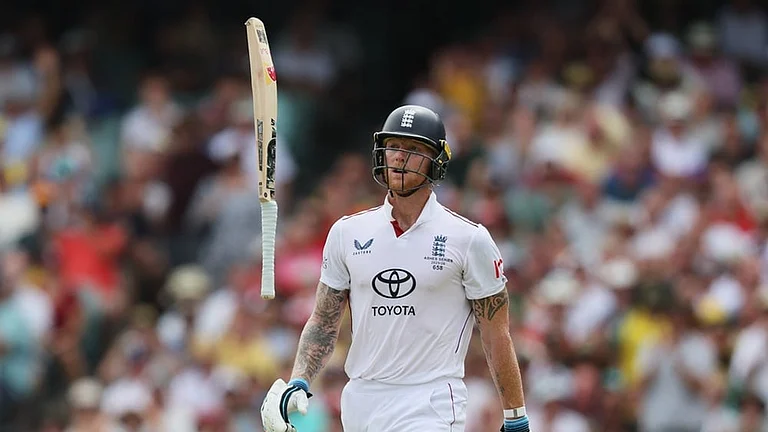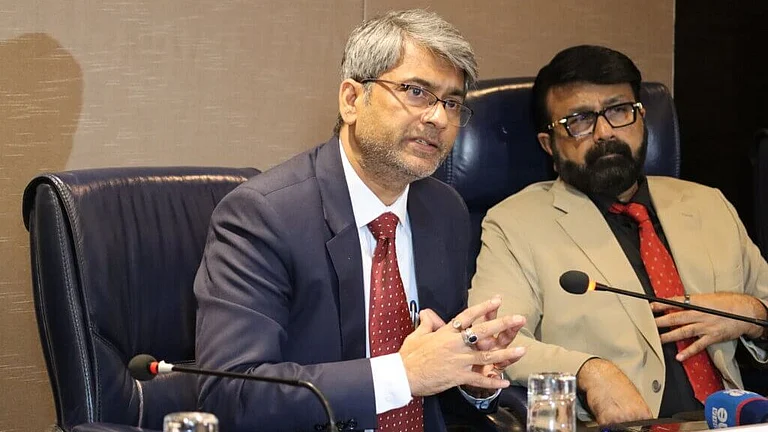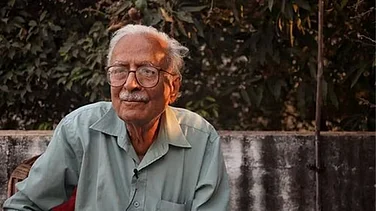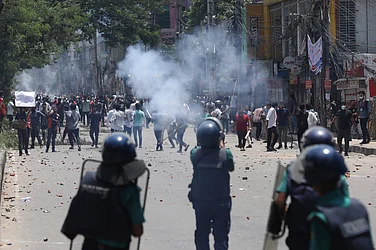Words like opportunism, righteousness, or, for that matter, inner voice of conscience have lost meaning in contemporary politics. Even a moniker such 'Paltu Ram' (a habitual turncoat) is not getting the same traction for Bihar's ‘evergreen’ Chief Minister Nitish Kumar as it did when he walked out on the grand alliance of the Rashtriya Janata Dal and Congress to restore his alliance with the BJP-led NDA in 2017.
It is not a riddle to understand the reason behind it. In its continual bid to expand itself to capture power by breaking other parties, or getting their leaders to defect since 2014, an ambitious BJP has grown manifold ever since Narendra Modi stormed back to power in 2019.
So, is Nitish’s decision to break off his ties with BJP and hop on to the Mahagathbandhan bandwagon his last-ditch fight for survival? Or, as is being hotly debated in political circles, the 71-year-old Nitish is merely in a hurry to fulfill his long-standing desire to become the Prime Minister? After all, only 26 months are left for the 2024 Lok Sabha elections. At the moment, arithmetic looks very complicated, but, as they say, politics is a game of glorious uncertainties and immense possibilities like football, cricket, or any other sport.
There are many if and buts if one analyses the recent political developments in Bihar. After leaving the NDA in 2013 and subsequently leading the Mahagathbandhan's victory in the 2015 Bihar assembly polls, Nitish had set out to unite all anti-BJP forces by trying to consolidate the old Janata Dal clan with almost tremendous zeal in his bid to take on Narendra Modi and his team.
But his efforts to bring former Prime Minister H.D Deve Gowda together with Omprakash Chautala of Haryana and Mulayam Singh Yadav of Uttar Pradesh on a common platform proved futile. It apparently broke Nitish's heart forcing him later to accept Modi as the leader of his alliance. So, what are his chances of becoming successful in a similar attempt in the run-up to the next general elections now?
Of course, the situation for BJP has changed considerably in the past few years, as people seem to be disillusioned with rising inflation and unemployment. Nonetheless, the Opposition does not be showing the kind of enthusiasm that was visible before 2019. In such a situation, can it be expected that the sparks from Bihar against the Modi-led BJP will reignite a serious bid for the Opposition unity against the central government the way they did during the JP movement way back in 1974? But then, one might ask, where is someone like Jayaprakash Narayan, who had led from the front but kept himself insulated from the lust for power all his life?
Yet, it cannot be denied that the arithmetic of parliamentary elections seems interesting. Noted psephologist Yogendra Yadav – presently active in the farmers' movement as the leader of Swaraj Abhiyan - provides a different account of political arithmetic. He divides the electoral map of the country into three parts to suggest that BJP may not have a smooth sail the next time.
According to him, if you include Punjab and Kashmir with the country's coastal region from West Bengal to Kerala, which comprises 190 Lok Sabha seats, the BJP won 36 seats (42 seats with allies) only in the last elections. Of these, 18 seats came from Bengal alone, which may come down to a single digit in the next elections in view of the current political scenario in the state. The number of party seats in Odisha may reduce as well.
Second, the North-West region which includes the Hindi belt states happens to be strongest for the BJP. In this belt, if we add Gujarat after removing Bihar and Jharkhand, it had won 182 seats out of the total 203 seats there, including three seats of its allies. Now, if the Congress or regional parties put in a little effort, the BJP's seats may decrease in Haryana, Himachal, Madhya Pradesh, and Uttar Pradesh.
The third and last is the intermediate belt consisting of Karnataka, Maharashtra, Jharkhand and Bihar along with the states of the Northeast. In this belt, BJP and its allies had won 130 seats including 88 of its own. In this belt, Shiv Sena had got 18, JDU 16 and LJP got six seats. Now, this alliance has gone awry.
If one takes Yadav's calculations into consideration, the BJP may not get more than 235 seats out of the total 530, provided the situation remains as it is today.
It can be said that despite all the power, money, and the alleged 'misuse' of powers by various central agencies and constitutional institutions to weaken the opponents, BJP seems to have the chinks in its armour. Successive state elections in recent times vouch for that. For example, Akhilesh Yadav's Samajwadi Party alliance got 3 crore votes against BJP's 3.80 crore votes in the Uttar Pradesh assembly elections held earlier this year.
Political observers believe that the results in the largest state could have been different had the BJP not been at the helm. That is why, they contend, the BJP wants to capture power at any cost in as many states as possible to consolidate its position. In Bihar, the party is already out of power now. But will Nitish and Tejashwi Prasad Yadav be able to further consolidate their position to take push the BJP back to its pre-2010 days? Of course, it depends a lot on whether their new government will live up to its promise of providing one million jobs and two million employment opportunities. Nitish, for his part, reiterated his resolve to do so at his Independence Day rally at Patna's Gandhi Maidan on August 15. But is the state treasury ready for an additional burden?
Prior to 2014, BJP’s vote share was around 14-15 per cent in Bihar and Nitish's equations contributed to that too. The party's vote share reached 25 per cent in 2014 and has remained the same since then. It can be called the effect of Modi but its alliance with JD-U has also been a contributing factor in helping it to get a chunk of EBC (extremely backward castes) votes.
In 2014, the BJP was supported by Ram Vilas Paswan's Lok Janshakti Party and Upendra Kushwaha's Rashtriya Lak Samata Party. Now, if the existing vote share of RJD (about 22 per cent), JD-U (20 per cent), Congress (7.5 percent) and Left (about 13 per cent) remain unchanged in the next general elections, it may become difficult for the BJP to repeat its 2019 performance with its smaller allies. The party has already stated its ambitious target of 200 of the total 243 seats in Bihar.
Meanwhile, some state BJP leaders are said to be happy with the opportunity that their party has got to stand on its feet without Nitish’s props. Its leaders have lately been staging protests over Nitish's "betrayal" and are hoping that the employment and law and order issue will harm the prospects of the Mahagathbandhan government in the polls.
Interestingly, on the day Nitish broke ranks with BJP, Sushil Kumar Modi, who had been pushed into the wilderness after the Bihar assembly elections, was brought forward by his party to take on the Mahagathbandhan. Sushil has since been firing salvos at the government, and its ‘tainted’ ministers, including deputy chief minister Tejashwi. He says that CBI's probe into the corruption case (IRCTC case) against Tejashwi and others has progressed. Tejashwi, however, says that "the BJP’s politics of intimidation or horse-trading cannot work in Bihar”. “If agencies like CBI and ED want, they are welcome to set up an office in my house,” he says.
Nonetheless, the state BJP has not been showing the kind of enthusiasm that was recently visible during the party’s executive meeting in Patna on 30-31 July, which was attended among other others by Union Home Minister Amit Shah and party president J.P. Nadda. At that time, Nadda, perhaps to cheer up his party cadres, had declared that "all regional parties will be wiped out in the coming years, only the BJP will be left." This had apparently not gone down well with Nitish and proved to be the last nail on their ties.
Nadda’s remarks prompted JD-U’s national president Rajiv Ranjan Singh alias Lalan Singh to say that "it had confirmed the possibility of a (BJP) conspiracy to break our party." “How can, the mother of democracy, tolerate this?” he said.
In retrospect, it will not be correct to say that Bihar’s developments took place suddenly. The way the new ministry was formed on August 16, it seemed more than clear that it could not have happened without prior deliberations. The speculations that Nitish would hand over everything to the RJD also proved untrue when his party not only retained the home department but also the key finance portfolio. In fact, the differences between JD-U and the BJP arose ever since the BJP inducted six JD-U MLAs in Arunachal Pradesh soon after the Bihar assembly elections. The row over the appointment of RCP Singh as a Union minister at the Centre hastened the split.
It remains to be seen which turn Bihar’s politics takes in the future. No one can say that the Modi-Shah duo will remain silent. So, watch this space for more twists and turns in Bihar’s politics.





















